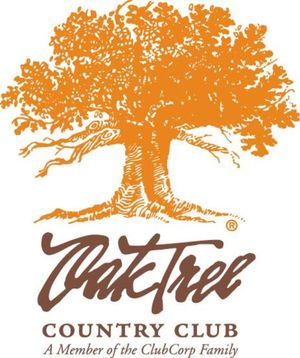 Golf Course Review by: Billy Satterfield
Golf Course Review by: Billy Satterfield
Rankings:
The Takeaway: Clearly playing second fiddle to its sister East course, the West course offers a slightly tamer design that still comes through with a handful of standout holes. If a composite course were built from the two courses comprising of the best 18 holes at Oak Tree Country Club, the West would contribute one-third of the holes with the East accounting for the rest. Grade B-
Quick Facts
Designer: Pete Dye in 1978
Cost: Private
Phone Number: (405) 340-1010
Course Website: Official Website - Visit Oak Tree Country Club (West)'s official website by clicking on the link provided.
Directions: Get here! - 700 West Country Club, Edmond, Oklahoma 73025 – UNITED STATES
Photos: See additional photos of Oak Tree Country Club (West)
What to Expect: Located across Kelly Road a wedge shot east of Oak Tree National, Oak Tree Country Club is a 36 hole facility that gave Pete Dye a virtual monopoly on golf course design north of Oklahoma City is the affluent city of Edmond. After Dye completed his work at Oak Tree National in 1976, he crossed the street to work on Oak Tree Country Club with the West course opening in 1978 and the East in 1982. Both the West and East courses are routed through neighborhoods but is done in a way that doesn't feel too distracting to the golf. The East is the longer and better course of the two which is why it is no surprise that it is the annual host site of the Oklahoma Open. In similar fashion to Dye's famous Harbour Town design in Hilton Head, SC, the East course is solid for the first 12 holes but then really ramps it up for the final six holes which stand as some of the best holes at the complex. The West course is no slouch with a handful of memorable holes but the course plays two strokes softer than the East for sure. Both courses feature plenty of bunkers to contend with as well as some water hazards to avoid. The courses are very conducive to walking with mostly subtle terrain paired with a couple of drastic elevation changes that add character to the layout that is otherwise achieved through the artificial mounding Dye is famous for. In the summer you'll see plenty of players utilizing carts during their round and stocking up on the complimentary water in the coolers found on the course.
By the Numbers
| Tees | Par | Yardage | Rating | Slope |
|---|---|---|---|---|
| Gold | 70 | 6752 | 74.6 | 140 |
| Gold/Blue | 70 | 6497 | 73.0 | 135 |
| Blue | 70 | 6234 | 71.4 | 132 |
| Blue/White | 70 | 5886 | 69.5 | 130 |
| White | 70 | 5570 | 68.0 | 128 |
| White/Red (Women) | 71 | 5117 | 70.1 | 129 |
| Red (Women) | 71 | 4576 | 67.2 | 118 |
Individual Hole Analysis
Signature Hole: 8th Hole – 462 Yard Par 4 – The 8th is fairly unassuming off the tee, but once players get to their ball they will see signature features that Pete Dye is so well known for. The green is protected on the left with a large pond with the putting surface is sustained by a retaining wall of railroad ties. With a couple of small bunkers right of the green, this hole screams Pete Dye and is beautiful and treacherous all at once.
Best Par 3: 14th Hole – 174 Yards – Another classic Pete Dye design, Pete loves to build par threes with water creating the boundary on one side of the green or the other while railroad ties help provide the support system between the putting surface and the water. In this instance the water is found on the left side of the green and artificial mounding on the right side and in the back. At just 174 yards from the back tee, Pete expects you to hit this green in regulation to avoid a big number being thrown on the scorecard.
Best Par 4: 9th Hole – 393 Yards – From the back tee, players have little idea what to expect on this hole as the large pond resting in front of them consumes the majority of the foreground. Upon clearing the water, players are presented with an Alps hill in front of the green that is further enhanced by spectacle bunkers at the base of the crest. This sets up a highly anticipated approach shot with the top of the flag peeking out above the Alps feature.
Best Par 5: 7th Hole – 576 Yards – The lengthy 7th hole plays uphill to a blind landing spot if you are long enough. With o.b. running the length of the left side, misses to the right are much more manageable to recover from. The raised green is surrounded by mounding and bunkers which demands precision to be executed on the approach shot to avoid a costly scenario to try and recover from. With all the trouble around the green, don’t try and be a hero here unless you have fully entered “the zone.”
Birdie Time: 4th Hole – 333 Yard Par 4 – Immediately after playing the hardest hole, Pete offers an olive branch with the easiest hole. The short uphill 4th can be cut down in distance even further by driving up the right side where the fairway bends that way to the green. Don’t go too far right though as a series of bunkers stair step their way towards the putting surface and can suddenly create an awkward up and down scenario to try and execute. Ultimately this is a hole you’ll want to take advantage of and will surely enjoy playing.
Bogey Beware: 3rd Hole – 470 Yard Par 4 – Pete Dye wastes little time getting into the meat of the course and serves up this lengthy par four to tackle on just the third hole. Water flanks the entire right side of the hole with the fairway tilted left-to-right towards the agua. With the fairway bending right, golfers who play away from the water will find themselves with a longer approach shot into the green and thus a lower likelihood of reaching it in regulation. The approach shot encourages players to enter the green from the open left side where a side hill can additionally help balls find the putting surface, while the right side is fronted by a bunker in front and a wall of upright railroad ties in the back. Into a headwind there is an especially low chance of carding a par, so play this one smart and minimize the damage.

/large/Oak Tree CC (West) 8th.jpg)
/large/Oak Tree CC (West) 8th water.jpg)
/large/Oak Tree CC (West) 14th.jpg)
/large/Oak Tree CC (West) 9th.jpg)
/large/Oak Tree CC (West) 9th alps.jpg)
/large/Oak Tree CC (West) 9th alps reverse.jpg)
/large/Oak Tree CC (West) 7th.jpg)
/large/Oak Tree CC (West) 7th fairway.jpg)
/large/Oak Tree CC (West) 4th.jpg)
/large/Oak Tree CC (West) 4th approach.jpg)
/large/Oak Tree CC (West) 3rd.jpg)
/large/Oak Tree CC (West) 3rd approach.jpg)
/large/Oak Tree CC (West) 3rd back.jpg)
